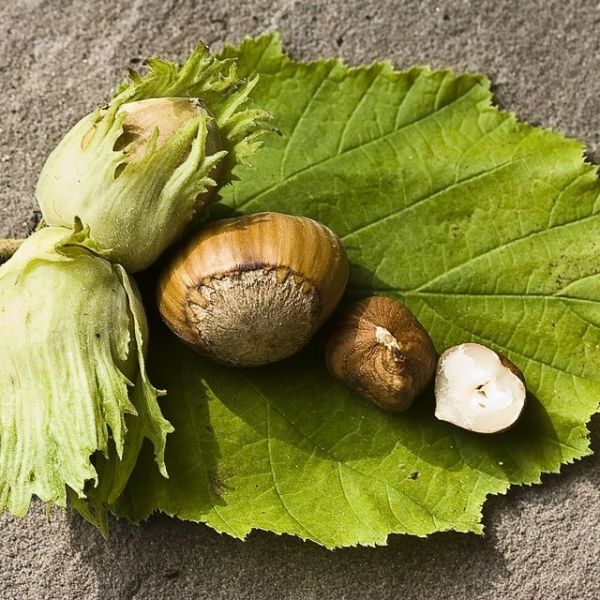You’re at a friend’s house, lounging on the back patio enjoying the sunny spring day when a gust of wind hits you right in the face. You look around but it seems like they’ve got themselves a line of windbreak trees, so what’s happening?
They might be running into this snafu because the leaves of their deciduous trees are high enough off the ground to allow the occasional breeze by. This can offer a cool reprieve in the summer months but if you’re looking for a foolproof windbreak, consider shrubs!
Along with planting evergreens and deciduous trees, shrubs are an essential part of windbreak design. Because they provide another layer of protection from the harsh winter winds, consider using these shrubs in your windbreak to maximize the protection available to you in every season.
Elderberry - Sambucus spp.
|
Prized for its fragrant flowers and delicious fruits, Elderberry serves a multitude of purposes in a windbreak. Along with providing protection from severe winter winds, Elderberry is favored by pollinators and birds alike. Consider using Black Lace Elderberries (Sambucus nigra 'Eva') for a little bit of a different appearance, rather than the green foliage with white flowers found in the York Elderberry, these have purple foliage with pink flowers. Best planted in zones 3-9, Elderberry will provide you with tasty fruits and become an integral part of your windbreak. If you beat the birds to the berries, try using them in the kitchen. While raw Elderberries are poisonous, giving them a quick cook makes them perfect for use in delicacies like jellies, pies, and even tea! Read a little more about ways to use the Elderberries in your windbreak shrub line in our blog: Elderberries: What’s the Deal with America’s New Favorite Plant! |

Hazelnut - Corylus americana

|
Another shrub with edible nuts, hazelnut is an ideal addition to a windbreak. Mature height is anywhere from 8 to 15 feet tall, and will spread to approximately the same size. Male catkins dangle from the branches in the spring, pollinating the tiny purple female flowers. In the fall, the hazelnut seed can be harvested and used to make decadent desserts like cookies, biscotti, and tarts. Or shake things up and add them to savory dishes like pesto, pizza, and even various plates of seafood. Fall color ranges from yellow to orange to red, depending upon a multitude of environmental conditions. Known to thrive in zones 4-9, hazelnut will provide you with years of protection and edible fruits in your windbreak. |
Dogwood - Cornus spp.
|
With branches ranging in colors from bright red to yellow to grey, dogwoods provide winter interest and color in a windbreak. Flowers appear in the spring, and in the fall can range in color from yellow to bright red. Try Arctic Fire® Dogwood (Cornus stolonifera 'Farrow') for bright red stems you can use in arrangements or Bud's Yellow Dogwood (Cornus alba 'Bud's Yellow') for yellow stems that will catch your eye. Grey Twig Dogwood (Cornus racemosa) boasts of beautiful white berries and grey branches. Because dogwoods are so adaptable, they are ideal for windbreak conditions; they will thrive where they are planted and provide support to the rest of the windbreak's efforts to lessen the winter weather. |

Nanking Cherry - Prunus tomentosa

|
Another edible shrub that thrives in a windbreak is Nanking Cherry. Pale white flowers dot the shrub in the spring and become bright red fruits in the summer. These fruits can be used for jams and jellies or left for the birds to enjoy. Nanking cherry grows between 8 - 10 feet high and 10 - 15 feet wide. Adding just a couple of these to your line can prevent strong winds from bothering you! Nanking cherry does require cross-pollination to produce fruits, so be sure to plant more than one in your windbreak. A hardy plant that will thrive in zones 2-6, Nanking cherry makes a strong addition to your windbreak that will tolerate most conditions. |
Common lilac - Syringa vulgaris
|
The common lilacs are known for their beautiful spring flowers and the fragrance that goes along with them. Growing to approximately 10 feet tall by 8 feet wide, these plants earn their way onto our list of best shrubs for windbreak not only because of their beauty but because they are hardy and adaptable. Plant a combination of Common Purple Lilacs (Syringa vulgaris) and Common White lilacs (Syringa vulgaris var. alba) far a bright variation in color. They’re best planted in zones 2-7, and will thrive in your windbreak, providing you spring beauty and winter protection. If you’re feeling adventurous, stray slightly from the common lilacs and try a Bloomerang® Dark Purple Lilac (Syringa x BLOOMERANG 'SMSJBP7')! This improved variety will proved protection against prevailing winds and give you a second show of flowers mid-summer through fall! |

Shrubs used by themselves or interwoven within the deciduous and evergreen trees make an exceptional and effective windbreak. Picking the right shrubs can even guarantee you flowers in the spring and sometimes summer into fall!
Remember, when planting your shrubs, it’s important to take note of the conditions they’ll be living in. If you’re planting under larger trees or evergreen conifers, you’ll want to select shrubs that thrive in shadier areas.
If they’ll be freestanding, keep in mind that they’ll need to be able to take on winter’s harsh winds and might appreciate well-drained soils. Try using these shrubs in your windbreak and enjoy the added benefits: edible fruits, fragrant flowers and habitat for wildlife.
Happy Gardening!

